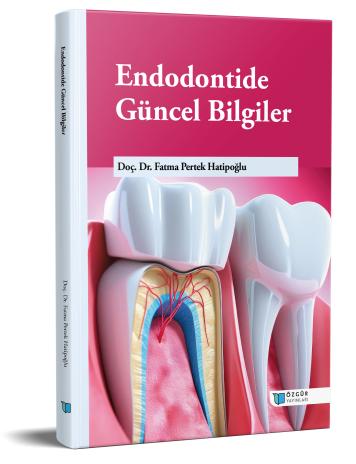
Tissue Engineering Applications and Treatment Methods in Regenerative Endodontic Treatment
Chapter from the book:
Pertek Hatipoğlu,
F.
(ed.)
2025.
Current Advances in Endodontics.
Synopsis
Regenerative Endodontic Treatment (RET) is a biologically based procedure developed to renew the pulp-dentin complex cells damaged by caries, trauma, infection, etc. RET involves the closure of the tissue scaffold applied after disinfection of the root canal with a bioactive material. RET consists of 3 main elements: stem cells, growth factors that enable the differentiation of these cells, and a tissue scaffold to regulate cell differentiation. Promising dental stem cells for RET with their high differentiation abilities include permanent dental pulp stem cells (DPSCs), apical papilla stem cells (SCAPs), primary tooth pulp stem cells (SHEDs), periodontal ligament stem cells (PDLSCs), dental follicle stem cells (DFSCs), and inflammatory periapical progenitor cells (iPAPCs). Natural and synthetic scaffolds are used to mimic the extracellular matrix in tissues. Synthetic scaffolds consist of polylactic acid (PLA), polyglycolic acid (PGA), polylactico glycolic acid (PLGA), polyhydroxy butyrate (PHB), polyepsilon caprolactone (PCL), calcium and phosphate materials, glass ceramics, and bioactive glasses. Blood clot, platelet-rich fibrin (PRF), platelet-rich plasma (PRP), concentrated growth factor (CGF), collagen, glycosaminoglycans, chitosan, hyaluronic acid, demineralized-natural dentin matrix and skin can be used as natural tissue scaffolds. Platelet-derived growth factor (PDGF), vascular endothelial growth factor (VEGF), insulin-like growth factor (IGF), fibroblast growth factor-2 (FGF-2) and transforming growth factor-beta (TGF-β) are found in dentin and play an active role in RET. RET methods are revascularization via blood coagulation, stem cell therapy, pulp implantation, tissue scaffold implantation, injectable tissue scaffold application, three-dimensional cell programming and gene therapy.

